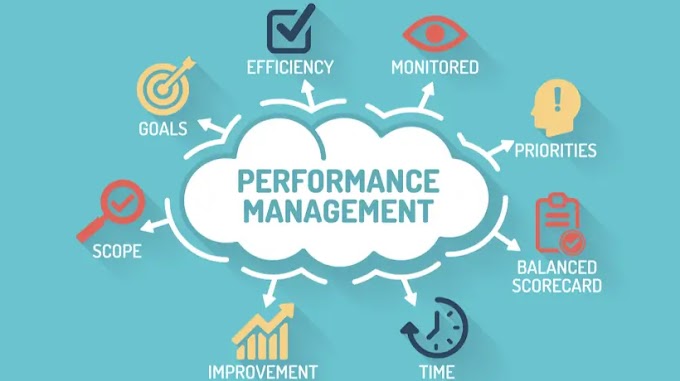Education is a fundamental human right that enables individuals to lead fulfilling and productive lives, participate in society, and contribute to economic growth and development. It is a critical investment in our future, as it prepares individuals with the skills, knowledge, and critical thinking abilities they need to succeed in an ever-changing world.
However, despite its importance, access to quality education is still out of reach for many people around the world, due to financial barriers. The high cost of tuition, textbooks, and other educational expenses can prevent students from pursuing higher education, or even finishing primary and secondary education. As a result, many people are excluded from the opportunities that education provides, leading to increased inequality and limited economic growth.
The current state of education affordability varies greatly between countries and regions. In some countries, education is free or heavily subsidized, while in others, students must pay high tuition fees and other expenses. Even in countries where education is technically free, such as the United States, the high cost of living and other expenses can still make education unaffordable for many families.
The thesis of this article is that education should be free for everyone. In the following sections, we will explore the benefits of free education, potential funding sources and costs, objections to free education, and case studies of countries with free education policies. Ultimately, we will argue that free education is a critical investment in our future and a necessary step towards a more equal and prosperous society.
Benefits of free education
Increased access to education
When education is free, it removes financial barriers that prevent many students from pursuing higher education. This includes tuition fees, textbook costs, transportation expenses, and other associated costs. For low-income families, these expenses can be prohibitive, forcing students to either forgo higher education altogether or take on significant debt to finance their education.
Free education can also benefit students from middle-class families, who may not be eligible for financial aid but still struggle to afford the high cost of tuition. By removing financial barriers to education, free education can help to increase the number of students who pursue higher education, leading to a more educated and skilled workforce.
In addition, free education can increase access to education for marginalized groups, such as Indigenous communities, refugees, and individuals with disabilities. These groups often face additional barriers to accessing education, such as language barriers, discrimination, and lack of support. By providing free education, we can help to ensure that these individuals have equal access to education and the opportunities that it provides.
Higher levels of educational attainment
Free education can also lead to higher levels of educational attainment, as more students are able to pursue higher education without the burden of debt. This can lead to a more educated workforce that is better equipped to meet the needs of the modern economy.
Higher levels of educational attainment can also lead to better health outcomes, increased civic engagement, and lower rates of crime and incarceration. Education is a key factor in promoting social and economic mobility, and free education can help to ensure that everyone has equal access to the opportunities that education provides.
Reduced inequality
Education is a key driver of social and economic mobility. When education is free, it can help to reduce inequality by giving everyone an equal opportunity to succeed. This is particularly important in countries where access to education is limited by factors such as income, race, ethnicity, or gender.
Free education can help to level the playing field for individuals from disadvantaged backgrounds, allowing them to compete on an equal footing with their peers. This can promote a more equal society and reduce disparities in income, health, and other outcomes.
Improved economic outcomes
Free education can also lead to improved economic outcomes, both for individuals and society as a whole. By increasing access to education and promoting higher levels of educational attainment, free education can help to create a more skilled workforce that is better equipped to meet the needs of the modern economy.
This can lead to increased productivity, innovation, and economic growth. In addition, free education can lead to lower rates of unemployment and poverty, as individuals are better able to find jobs that match their skills and qualifications.
Free education has numerous benefits for individuals and society as a whole. By removing financial barriers to education, increasing access to education, promoting higher levels of educational attainment, reducing inequality, and improving economic outcomes, free education can help to create a more equal and prosperous society.
Cost of free education
While free education has numerous benefits, there are also costs associated with implementing such a policy. These costs can be significant, and policymakers must consider how to fund free education in a way that is sustainable and equitable.
Discussion of potential funding sources
There are several potential funding sources for free education. One option is to increase taxes to generate revenue for education. This can include increasing taxes on high-income earners, corporations, or luxury goods. Another option is to redirect existing education spending towards free education, by repurposing funds currently allocated to other areas such as defense or infrastructure.
In addition, government grants and philanthropy can also be sources of funding for free education. Private donors, corporations, and foundations can contribute funds to support free education initiatives, either through one-time donations or ongoing support.
Comparison of costs of free education to current education spending
It is important to compare the costs of free education to the current spending on education. In some cases, the costs of free education may be lower than the costs of the current system, particularly if the current system includes high administrative costs or inefficient spending.
In other cases, the costs of free education may be higher than the current spending on education, particularly if the current system is underfunded or lacks adequate resources. In these cases, policymakers must consider how to generate additional revenue to fund free education.
Long-term benefits of free education
While there are costs associated with implementing free education, it is important to consider the long-term benefits of such a policy. These benefits include increased economic growth, reduced inequality, improved health outcomes, and a more skilled and productive workforce.
By investing in education, we can create a more prosperous and equitable society, with benefits that extend far beyond the individual student. In addition, the long-term benefits of free education may outweigh the short-term costs, making it a sound investment in the future of our society.
While there are costs associated with free education, it is important to consider the potential benefits and to identify sustainable and equitable funding sources to support this policy. By investing in education, we can create a better future for ourselves and for future generations.
Objections to free education
While free education has numerous benefits, there are also objections to implementing such a policy. These objections often revolve around concerns about the cost of free education and who will pay for it. In this section, we will explore some of the objections to free education and provide rebuttals to these objections.
Arguments against funding free education
One of the main objections to free education is the cost. Some argue that implementing free education would place an unfair burden on taxpayers, as they would be responsible for funding this policy through increased taxes or other means.
Others argue that free education would lead to reduced quality of education, as there would be less incentive for schools to compete for students and for teachers to excel in their work. Some also argue that free education would lead to an overabundance of students, as there would be no financial barriers to entry, which could lead to overcrowded classrooms and reduced access to resources.
Rebuttals to objections
While these objections are valid concerns, there are also rebuttals to these objections. For example, while implementing free education would require significant funding, the long-term economic benefits of a more educated population could offset these costs over time. In addition, studies have shown that education has a positive impact on economic growth and can lead to increased productivity and innovation.
Regarding concerns about reduced quality of education, it is important to note that free education does not necessarily equate to lower quality. Many countries with free education policies, such as Finland and Germany, have high-quality education systems that are highly competitive and produce excellent outcomes.
Moreover, free education can actually increase access to resources and opportunities for students, particularly those from disadvantaged backgrounds. By removing financial barriers to entry, free education can ensure that all students have an equal opportunity to access education and the resources they need to succeed.
Finally, concerns about overcrowding can be addressed through strategic planning and resource allocation. Policymakers can allocate resources to ensure that classrooms are adequately staffed and resourced, and can also implement policies to encourage the efficient use of resources and space.
While there are valid objections to free education, it is important to consider the potential benefits and to address these objections through thoughtful policy design and implementation. By investing in education, we can create a more equitable and prosperous society for all.
Case studies of countries with free education
While free education is not yet a widespread policy, there are several countries around the world that have implemented this policy with positive results. In this section, we will explore some case studies of countries with free education policies.
Finland
Finland is often held up as a model for education policy, and for good reason. The country has a highly competitive education system that consistently ranks near the top in global rankings. In Finland, education is free for all students, including at the university level.
One of the key factors that has contributed to Finland's success is the country's emphasis on teacher training and support. Teachers in Finland are highly trained and highly respected, and the profession is highly selective. This has helped to ensure that the education system is staffed with high-quality educators who are dedicated to their work.
In addition to free education, Finland also provides students with a range of resources and support, including free school meals and health care. This helps to ensure that all students have access to the resources they need to succeed.
Germany
Germany is another country that has implemented free education policies, including at the university level. In Germany, all students can attend university for free, regardless of their background or financial means.
Germany's free education policies are seen as a way to promote social mobility and reduce inequality. By ensuring that all students have access to higher education, regardless of their financial means, Germany is helping to level the playing field and create more opportunities for its citizens.
Brazil
Brazil is another country that has implemented free education policies, including at the primary and secondary levels. In Brazil, education is seen as a fundamental right, and the government has worked to ensure that all children have access to education.
One of the key ways that Brazil has expanded access to education is through the implementation of community schools. These schools are located in low-income areas and provide students with a range of resources and support, including free meals and health care. This has helped to ensure that all children have access to the resources they need to succeed.
Other countries
In addition to these case studies, there are several other countries that have implemented free education policies, including Norway, Sweden, and Slovenia. While each country's approach to free education is unique, they all share a commitment to ensuring that all students have access to education, regardless of their financial means.
These case studies demonstrate that free education policies can have a positive impact on student outcomes and can help to reduce inequality. By investing in education and ensuring that all students have access to the resources they need to succeed, we can create a more equitable and prosperous society for all.
👉 Read more posts with the same topic
Conclusion
In conclusion, education is a fundamental human right that should be accessible to all, regardless of their financial means. Education is essential for personal growth and development, and it is also critical for creating a more equitable and prosperous society.
The benefits of free education are numerous. It increases access to education, leading to higher levels of educational attainment and reducing inequality. It also improves economic outcomes, creating a more skilled and productive workforce. While there are costs associated with free education, these costs can be offset by the long-term benefits to society.
Despite the benefits, there are objections to free education. Some argue that it places an undue burden on taxpayers or that it would lead to a decrease in the quality of education. However, these objections can be addressed through proper funding and accountability measures.
Several countries around the world have already implemented free education policies with positive results. Finland, Germany, Brazil, and other countries have shown that free education can lead to improved student outcomes and reduced inequality.
As citizens and policymakers, we have a responsibility to advocate for free education. We must work to ensure that all students have access to the resources they need to succeed, regardless of their financial means. By investing in education, we can create a more equitable and prosperous society for all.








0 Comments